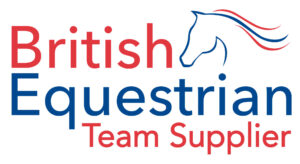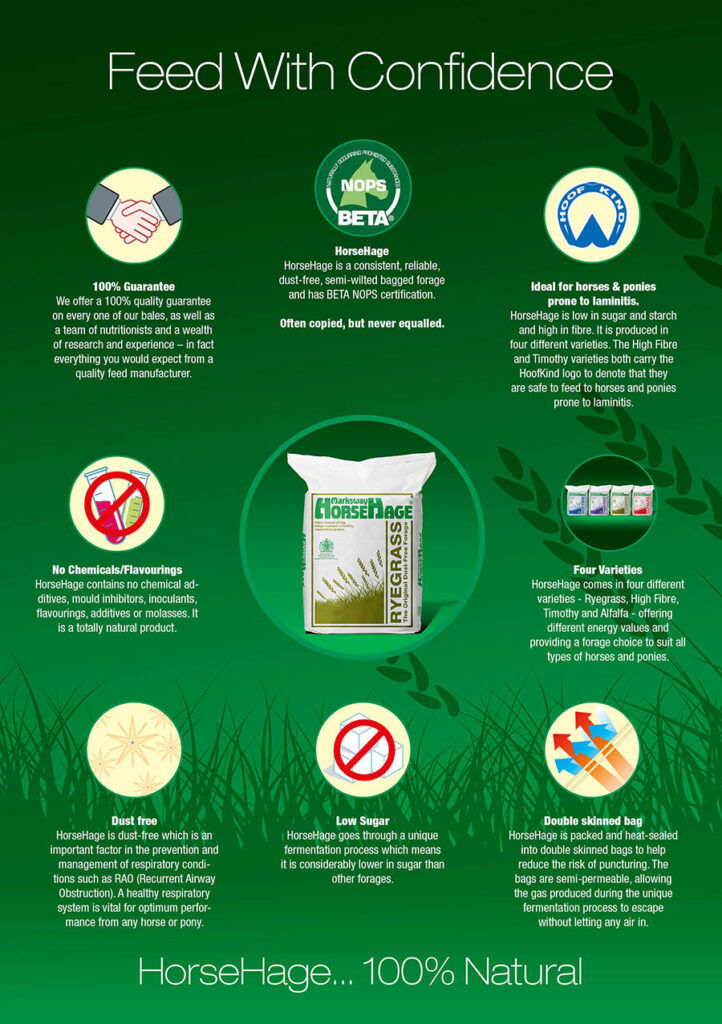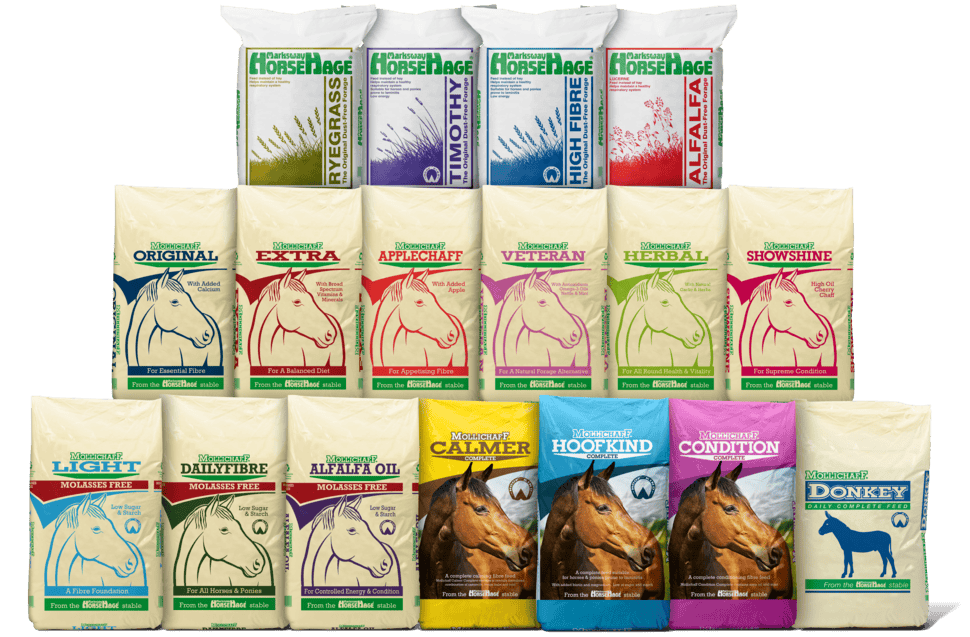In the 1970’s, the late Mark Westaway became increasingly concerned with event horses persistently coughing. His veterinary surgeon revealed that the coughing was dust-related and since hay was the major dust source, this problem would continue unless a dust-free forage was specifically designed for the horse. Thus, the idea for HorseHage was born.
Dust-Free Horse Feeds Designed by HorseHage
HorseHage Ryegrass was the original dust-free forage designed, but was soon followed by HorseHage High Fibre, HorseHage Timothy and HorseHage Alfalfa, the specialist product. As well as these products, HorseHage is also well-known for the Mollichaff range of high fibre chaffs and Mollichaff Complete feeds.
HorseHage’s success has seen a Royal Warrant awarded in 1983 after the Queen’s horse, Burmese, was fed HorseHage when suffering a respiratory problem. Burmese was one of tens of thousands of ponies and horses, from Shetlands to Thoroughbreds, that have benefited from HorseHage’s dust-free properties.
As the Official Supplier of Dust-Free Forage to The British Equestrian Team, HorseHage has been supplied to the British Equestrian Teams at every Olympic Games since Los Angeles in 1984. We also supply forage for the Horse of the Year Show (HOYS).
Why Choose HorseHage for Your Horse?
HorseHage is a natural product with no additives and is the nearest thing you can get to grass in the field. Also, not only can it help maintain a healthy respiratory system, but a healthy digestive system too.
“Over forty years of production has given us all the knowledge and experience we need to make a top-quality product, and our sales prove this.”
Mark Westaway
HorseHage Vs. Haylage
Many people think that HorseHage and Haylage are the same, but there are several important differences:
HorseHage is made from specifically grown grass leys or alfalfa. The fields are cultivated and reseeded every two to three years to maintain the consistent nutrient and fibre levels, and to minimise weeds.
Haylage, on the other hand, is often made from older pasture which the farmer rotates between grazing for his stock and forage production. The grass tends to be perennial and yields a forage which can be variable. It is generally lower in fibre and higher in protein than bagged forage and can be too rich for horses.
HorseHage is produced with the optimum moisture content for horses of between 35 and 45 percent through strict quality control throughout the production process.
When making small bale haylage in a general farming situation, this level of control is difficult to maintain.
HorseHage is wilted on the field and baled just like hay. It is then highly compressed to leave a minimum amount of air in the bag. This ensures the optimum fermentation needed to preserve the grass or alfalfa as a forage suitable for horses, and minimises the growth of bacteria, fungi and moulds.
With small bale haylage, there is more air present due to lack of compression and fermentation is less efficient which may allow the growth of undesirable organisms.
HorseHage is packed in plastic bags with an inner plastic liner to reduce the risk of puncturing which causes mould. The plastic is also semi-permeable which allows gas produced during the fermentation stage to escape, whilst preventing air from entering. This process results in the vacuum-packed appearance of HorseHage bags which makes the product very stable and able to be kept for up to 18 months unopened. The size of the bales makes them very easy to handle and they can be stored outside on a pallet. Due to the highly compressed bale, you may find there is more forage inside a bale than you think!
Haylage is usually wrapped or packed in non-permeable plastic which is more easily punctured.
We go to considerable efforts to ensure that the grass and alfalfa harvested for HorseHage is at the optimum level of growth before cutting. The decisions on when to mow a particular field and when to bale the grass to achieve maximum quality are based on examining the crop in the field and using years of experience in producing HorseHage. Batches are examined prior to release for sale and checked for moisture content, visual appearance, texture and aroma. Nutritional analysis is carried out throughout the season to provide us with the maximum levels of information regarding the feed value of our products.
Haylage tends to be cut when the weather is good and is not usually tested before cutting, so nutrient value and DM can vary.
HorseHage is fully guaranteed by the manufacturers.
Haylage can often vary in quality and nutrient value from bale to bale and there is often no guarantee when buying each bale, which often results in a degree of wastage.
HorseHage is produced in four varieties – Ryegrass, High Fibre, Timothy and Alfalfa – enabling you to feed a forage that is matched to your horse’s requirements.
Haylage generally only comes in one type, and the nutrient and energy values are often not known.
HorseHage forage feeds are certified by the Feed Materials Assurance Scheme (FEMAS). This means that the feed ingredients used in HorseHage are produced from specially grown grass and alfalfa leys with a high regard for feed safety, consistent quality and full product traceability.
There are very few forage/haylage products that hold this certification.




